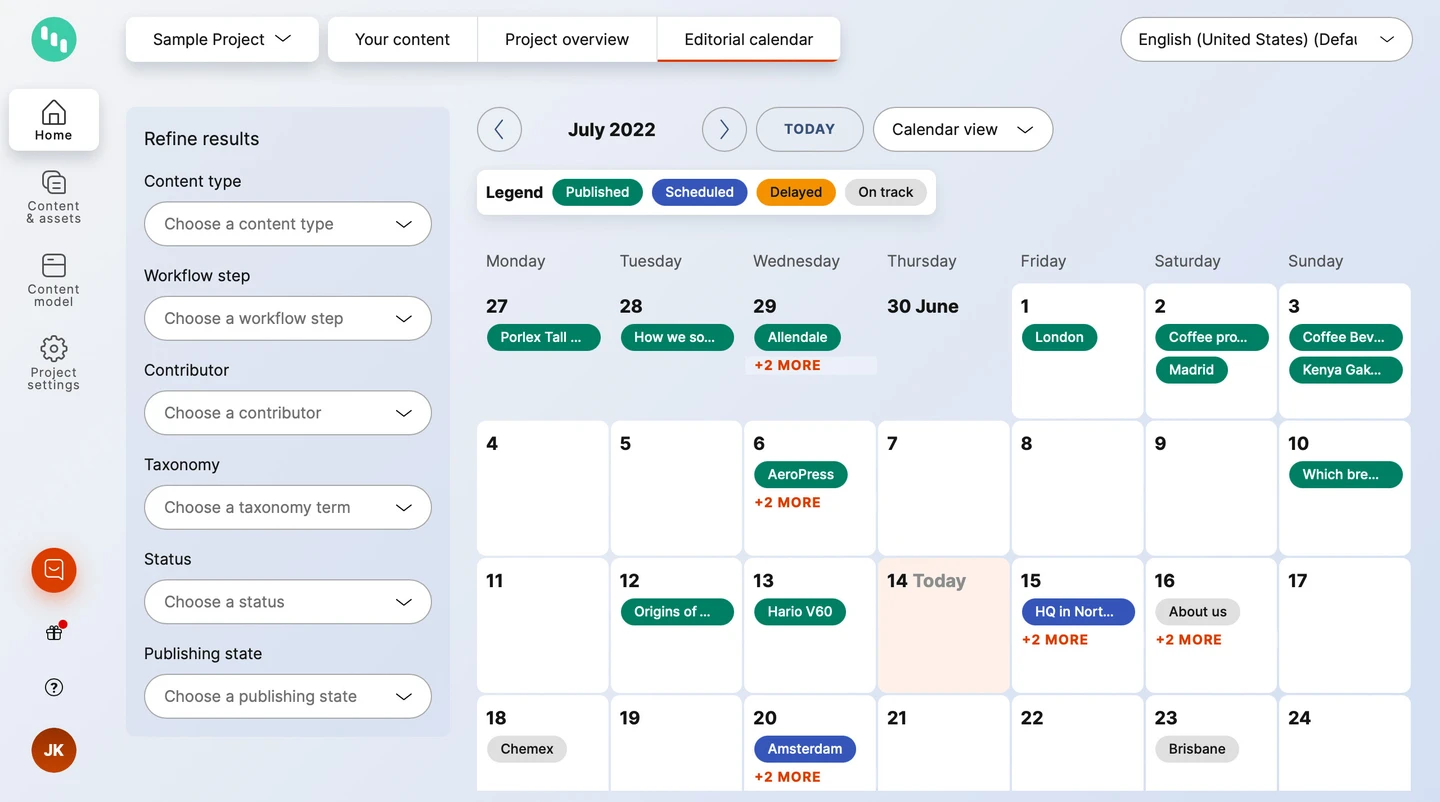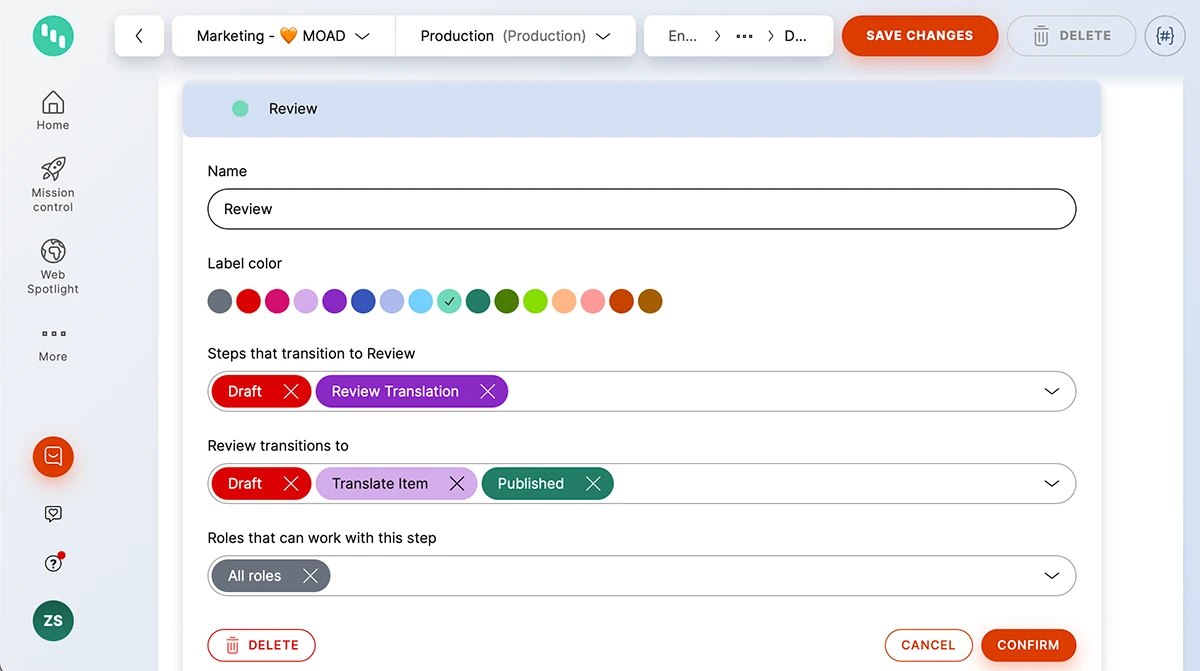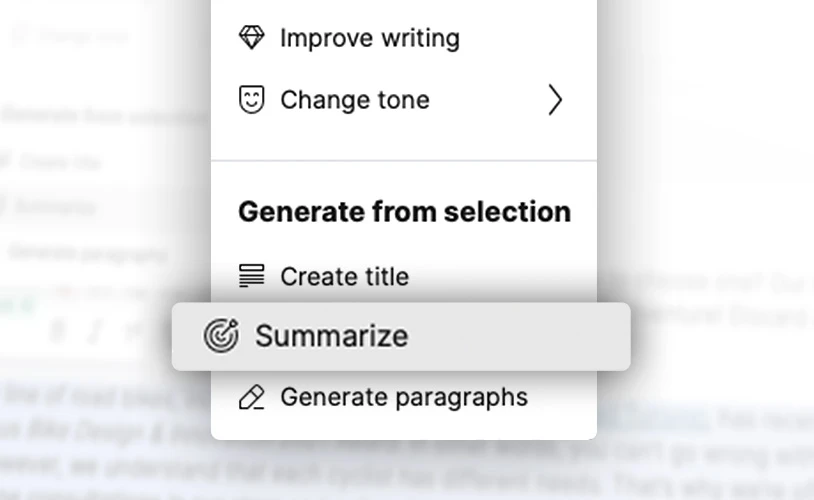Crafting content in the digital age: A deep dive into the content creation process
Explore the process of content creation and how tools like headless CMS empower creators to deliver stellar content to their audiences.
Written by Lucie Simonova

Explore the process of content creation and how tools like headless CMS empower creators to deliver stellar content to their audiences.
Written by Lucie Simonova

The days when creating content meant writing a catchy headline and crafting a compelling story are long gone. The landscape of content creation has undergone a big change, driven mostly by the dynamic nature of the online world. This shift has led content creators to adapt, innovate, and harness the power of technology to stand out in the digital crowd.
One of the most remarkable developments in this new era of content creation has been the rise of cutting-edge tools and platforms that have completely transformed the way we do things. Headless CMSs like Kontent.ai have emerged as game-changers in this era. They’ve redefined how content is managed and delivered, bringing a new level of flexibility and scalability.
In this deep dive into the content creation process, we’ll explore what lies behind the scenes and how these modern tools are reshaping the process and empowering creators to deliver stellar content to their audiences.
What are the necessary steps you need to take to make your content creation effective? Let’s take a look.
Audience research and persona creation is like having the ultimate secret weapon in your content creation arsenal. It involves much more than just delving into the demographics – the age and location of the people engaging with your content are not enough; you need to dive deep into their psychographics and online behaviors. Finding out the interests, values, pain points, and online habits are all crucial to creating content that speaks directly to your people.
Imagine going to a bakery, expecting to find an array of delicious pastries for your breakfast, only to walk in and see an offer of fruits and vegetables. No matter how fresh and colorful it all looks, that is not what you came for. When you know who your audience is, what they love and want, but also what keeps them up at night, you can create content that resonates with them on a personal level.
Creating personas goes a step further. Based on the audience research, you build a character that represents your ideal audience member. You give this persona a name, a face, and a backstory. To help you with persona creation, HubSpot offers a great list of questions you can ask, including:
When you create content, imagine having a conversation with this persona, addressing their needs and concerns. It humanizes your audience and makes it easier to produce content that speaks directly to them.
Creating a unique voice and message for your content helps you stand out from the crowd. It’s like your content’s own personality, and it’s something that has the potential to make your content memorable in the eyes of your audience.
The tone of your content adds the required emotional touch – it could be friendly, formal, humorous, or serious, all depending on what resonates with your target audience. The tone is the attitude or mood that your content conveys. It sets the overall impression of your message and influences how readers or viewers perceive and connect with your content.
For example, a content piece can have a casual and friendly tone, making the audience feel like they’re having a chat with a close friend. Alternatively, it could have a formal and authoritative tone, which conveys professionalism and seriousness. The choice of tone should align with the emotional response you want to evoke from your audience and their preferences.
Style is the way you present your content. It can be, for example, through storytelling, data-driven insights, or maybe a combination of both. The style of your content can include a wide range of elements, such as the structure of your content (e.g., lists, narratives, case studies), the use of imagery and design, and even the type of language and vocabulary you employ.
For instance, an informative blog post could adopt a more formal style with structured headings, data, and charts, whereas an exciting company announcement might feature vibrant images and other types of visuals. Similar to the tone, your style should also cater to the content’s purpose and the preferences of your target audience.
Voice is like your content’s distinct personality. It’s the unique way you express your thoughts and ideas, and it’s also what differentiates your brand from others. The voice you choose should align with your brand’s identity and values, ensuring that your audience recognizes and relates to your content on a personal level.
Setting a distinct tone, style, and voice that resonates with your target audience is one of the key pillars of your content’s success.
Storytelling and authenticity are the dynamic duo of content creation. If implemented into the process of content creation, they have the ability to forge long-lasting connections with your readers. Creating stellar content is not just about delivering information; it’s about crafting a narrative that strikes a chord deep within the hearts and minds of your audience.
Authentic storytelling creates a more personal atmosphere where you invite the readers into your world. It’s not just about sharing the polished highlights but also giving your audience a sneak peek behind the scenes or sharing the bumps and hiccups of your journey. This is what makes your content relatable and human.
Genuine stories have the incredible power to break down barriers and connect on a personal level. When you share your experiences, challenges, and triumphs, it’s easier for your audience to see what’s really behind the logo of your brand.
Idea generation in content creation is a captivating journey. It involves the use of brainstorming techniques and tools, as well as valuable insights from audience feedback.
Whether it’s your whole team or it’s just you and your notepad, brainstorming is arguably one of the most fundamental steps in the content creation process. After all, it’s where the ideas for all your potential projects are born.
Here are some brainstorming techniques and tools to get you started:
Don’t forget about leveraging audience feedback for your content ideas! Whether through comments, surveys, or social media interactions, this feedback provides a goldmine of insights that can shape and refine your whole content creation strategy.
Data is the backbone. It could be quantitative data, like statistics or survey results, giving you some hard numbers to work with. Qualitative data, on the other hand, brings the human touch with insights from initiatives like interviews, focus groups, or open-ended survey responses. This data offers a deep understanding of your audience, industry trends, and potential content gaps.
After gathering data, you should ask yourself relevant questions to collect some valuable insights. What do the numbers tell you about your audience’s preferences? What patterns pop up that might spark interesting content angles?
No content creation journey is complete without a solid foundation of reference material. This is where your content team should dive into articles, books, reports, whitepapers, and any reputable sources that can broaden your horizons.
Crafting a content roadmap and calendar are also steps that shouldn’t be omitted. When creating your roadmap, outline your overarching goals:
Don’t be afraid to tweak and refine – your roadmap should be a flexible guide.
With your content calendar, assign specific dates for each piece of content, ensuring a steady flow that aligns with your roadmap. Don’t forget to take into account key dates, events, or trends that might impact your content’s relevance.

When it comes to content drafting, think of it as laying a solid foundation for what’s to come. You want to make sure your base is strong and well-structured before you start adding anything on top.
To help you get going, you can start by creating a simple outline. What are the main points you want to cover, and in what order? This will help you maintain a logical flow. After, you can develop your main ideas and support them with evidence, examples and assets such as images or videos.
Try to not just talk at your audience – involve them. Ask them intriguing questions, and encourage comments or other interactions by including a call to action. This turns your content into a conversation rather than a monologue. Your audience wants to be engaged!
After jotting down your main points and giving them context, you can get into crafting the perfect introduction. It should grab attention and set the tone for what’s to come. The same goes for the headline – it should be short and snappy and get the reader’s attention in a split second.
Leaving the introduction and headline as the very last step might be a good idea. Why? By drafting the body of your content first, you gain a clearer understanding of the core message and main points, helping you not drift away.
Need help on how to structure your content properly? Check out our guide 7+1 steps to structure a blog post that will help you cover all the essential bases.
Imagine editing and refinement as the fine-tuning process, where your content goes from a rough draft to a polished gem. Here’s why iterative reviews and feedback are your secret sauce for success.
It’s easy to get immersed in the content creation process and overlook small errors or inconsistencies. Thankfully, multiple rounds of reviews bring in fresh perspectives. What might be evident to you might not be as clear to others. Different eyes catch different nuances, ensuring a more comprehensive review. Iterative reviews also help ensure that your tone, style, and messaging are consistent throughout the whole piece.
What are some practical tools and techniques to make your editing process smooth and effective?
A single source of truth empowers organizations to scale up their content strategies effectively. By having all the content centralized in a central cloud-based repository, staying organized becomes a breeze. With a unified content hub, your team can focus on creating content that’s always compliant and on-brand.
The benefits of a single content repository are numerous. With Kontent.ai’s content hub and all your content in one place, you can safeguard your brand with content governance, make the most of your content and assets, and deliver content to any channel with ease.
Having a single source of truth allows you to plan and prepare your content all in one location. That way, you can make sure your content will be consistent, regardless of where it’s viewed, and your audience will always receive a cohesive story.

No more waiting for email attachments or wondering who’s working on what. With Kontent.ai, your team is all on the same page – literally. Changes happen in real-time, and content evolves right before your eyes.
Let’s dive into some of Kontent.ai’s collaborative features that’ll give your team a productivity boost that’s hard to beat.
Especially in large organizations dealing with tons of content every day, it’s not efficient for a single team member to be responsible for everything. Simultaneously, having different team members carrying out similar tasks can lead to duplicated work and wasted time.
Defined workflows, however, can help you breeze through the whole content creation process, from drafting to publishing. Is your content ready for graphics or the final review? Change the workflow accordingly and assign the next step to a responsible team member via established roles.

Having defined roles will help your team streamline the cooperation and allow members to use their expertise at the appropriate time. With roles, you can make sure that all your content gets approved and published by the right person. In addition, with role-based permissions, you can control what users can do to guarantee that workspaces are secure and orderly.

Thanks to simultaneous editing, you and your team members can work on the same piece of content at the exact same time without stepping on each other’s toes. With real-time notifications, you always know which fields your team members are working on. In addition, the fields get locked down until the changes are complete.
With this collaborative feature, your team is empowered to edit and update content faster since everyone can change different fields without needing to wait for someone else to finish. What a relief!
With assignable tasks, content creators will get a better experience while you can keep the duties and responsibilities of your team clear. Need someone to proofread, review, or add visual aids? Just assign the task, and they’ll get a notification.
A content calendar brings harmony and structure to your content creation process. It allows you to maintain a consistent presence across all your platforms, whether it be social media, blogs, newsletters, and more.
It ensures that your audience receives a steady stream of valuable content without being overwhelmed. It also allows you to be strategic and plan your content in alignment with events, seasons, or industry trends.
With comments and suggestions, you can manage feedback and revisions efficiently and collaborate with teammates in real-time. Incorporate feedback from fellow creators with in-context comments to ensure content is clear and engaging.
Say goodbye to a chain of emails for good. By adding suggestions exactly where you see fit, you can leave feedback on any problem areas right in the platform. Suggest a content change and approve it with just one click and make the review process a breeze.

Fine-tuning your content and optimizing it for SEO is crucial to appear in the top results on Google, and having built-in SEO checks can significantly help during this stage of your creation process. These tools analyze your content and suggest tweaks to your copy, meta descriptions, and keywords. All in all, they make sure your content speaks the language that search engines understand.
Most importantly, though, your content should always speak the language of your readers. Having readability checks in place can help you ensure your copy will be easily digestible and won’t be confusing. With SEO and readability checks in place, you can ensure your content is primed for both search engines and readers – and that is the key to quality and high-performing content.
To find out more about what Kontent.ai can do for your SEO, read our blog post, Kontent.ai loves: SEO.
Kontent.ai’s headless nature allows for integrations with other content creation tools and platforms. It easily can connect, communicate, and collaborate with the diverse ecosystem of tools that modern content creators rely on. It can be seamlessly added into your organization’s microservices architecture, making it easy to integrate with any of the tools or services you’re using right now, but also those you might add in the future.
Extensibility and integrations allow your teams to work smarter by leveraging external tools that seamlessly enhance your workflow. As a result, they help you make sure that your content creation process is not a series of disjointed tasks but rather a well-orchestrated symphony.
For example, Kontent.ai’s integration with Semrush allows businesses to boost their content production with a professional suite of SEO tools and get ahead of the competition even before their content gets published.
The future of content creation is undeniably intertwined with AI and advanced analytics. What’s interesting is the role these play in predictive content analysis, offering creators a sneak peek into the potential performance of their content.
By analyzing historical data, AI today can make educated predictions about which content strategies are likely to perform better. In addition, AI-powered tools are able to predict the types of content an audience segment is likely to engage with based on past interactions. If you decide to embrace AI and advanced analytics in content creation, then you have your ticket to staying ahead of the curve.
With Kontent.ai, you can seamlessly add your CMS to your microservices architecture, making it easy to integrate with any analytic tools you’re using now or might want to use in the future. The fusion of CMS with your favorite AI-driven and analytic tools will allow you to streamline content creation, enhance personalization, improve your SEO strategy, and overall be more attuned to the needs of your audience.
Stuck with a writer’s block? Feeling the blank page taking a toll on your efficiency? Automated content suggestions are a game-changer in streamlining the ideation process. Alleviate the brainstorming load once in a while and breeze through the first steps of content creation with ease.
AI can be of big help in the next stages of the process, too. Leverage it to optimize your content and create a snappy headline, adjust the tone to fit the needs of your audience better, or make the copy shorter and more straightforward.
As the first CMS with native AI capabilities, Kontent.ai can help your team create and improve content faster than ever. With just a few clicks, you can:
Learn more about Kontent.ai’s native AI capabilities.

As technology continues to advance, so does the creative canvas for content creators. The content creation landscape is in an ongoing state of evolution, and that might be the only constant we can rely on.
Having said that, with advanced content management tools like Kontent.ai, your content creation will undergo a transformative shift. Whether it be the array of collaborative features, seamless integrations, or AI capabilities that it offers, the possibilities of content creation will become boundless.

What if we told you there was a way to make your website a place that will always be relevant, no matter the season or the year? Two words—evergreen content. What does evergreen mean in marketing, and how do you make evergreen content? Let’s dive into it.
Lucie Simonova

How can you create a cohesive experience for customers no matter what channel they’re on or what device they’re using? The answer is going omnichannel.
Zaneta Styblova

To structure a blog post, start with a strong headline, write a clear introduction, and break content into short paragraphs. Use descriptive subheadings, add visuals, and format for easy scanning. Don’t forget about linking and filling out the metadata. Want to go into more detail? Dive into this blog.
Lucie Simonova